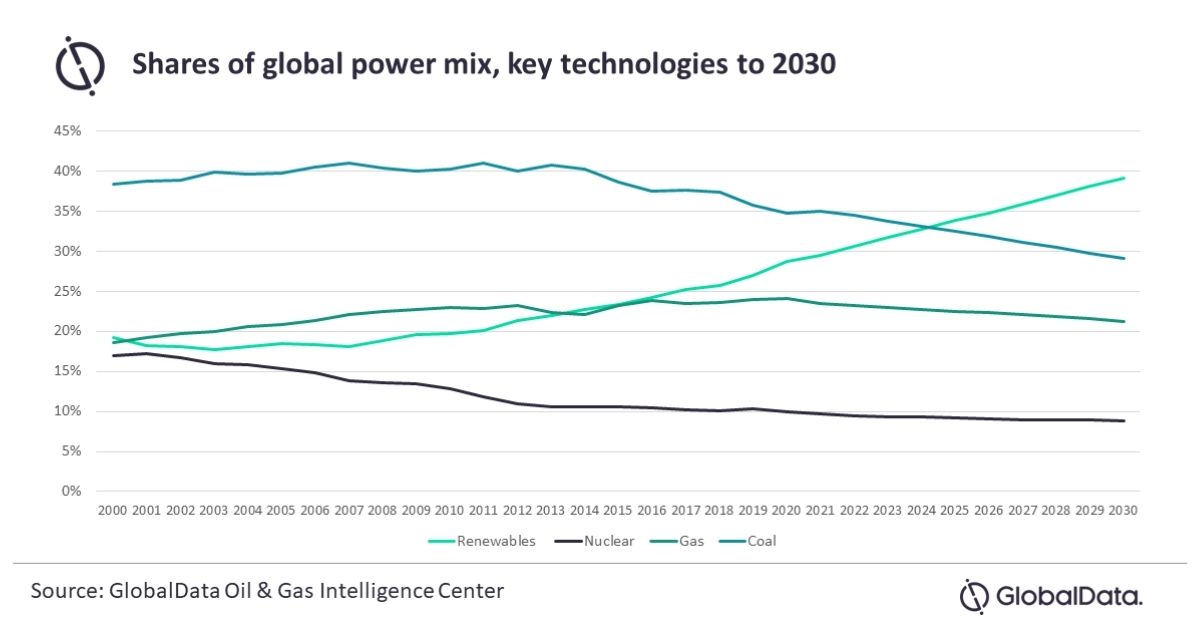The global push for a transition to cleaner energy, driven by strong policies and financial support, will heavily impact the future of renewables, according to GlobalData. The leading data and analytics company notes that renewables are expected to take almost 40% of the power mix by 2030.
GlobalData’s latest report, ‘Global Power Mix in Transition’, reveals that there is increasing investment in solar and wind plants, and new technologies such as hydrogen, energy storage, carbon capture and smart grids are driving change in the power sector - supporting a path to smart decarbonization.
Barbara Monterrubio, Energy Transition Analyst at GlobalData, commented: “2020 was a decisive year in the push towards renewable technologies. Now, renewables will lead the power mix from 2024, overtaking coal-fired power generation.”
GlobalData’s scenario for the next decade is based on current policies, actions, technologies and announced power plants. This baseline sees coal retaining a high share in the mix for the next ten years, unless a stronger policy reinforcement is made, whereas IEA’s Net – Zero Emissions Emission (NZE) Scenario, has coal as a main target for the next decade, supporting this reduction with wind and solar generation.
From a regional mix perspective, Europe will continue to make an accelerated shift into clean technologies, with renewables reaching 50% by 2030. Progress is slower in North America, where renewables appear set to contribute just under 40% of generation by 2030.
Monterrubio continues: “Rapid demand growth in the APAC region means that coal and gas is currently set to increase over the decade, with fossil-fuel generation retaining over a 50% share of the mix. However, clean technologies will continue to increase generation, wind and solar power in particular. This will impact the energy mix both in APAC and the Americas regions”.
As part of the energy transition path, the development of particularly disruptive technologies such as hydrogen, carbon capture storage (CCS) energy storage and digitalization have been reshaping the market.
Monterrubio adds: “While hydrogen is seen as a way to cut emissions across industries, green hydrogen plants are at a nascent stage. Most projects are still in the ‘feasibility’ stage, targeting multiple sectors such as transportation and industry alongside refining and chemicals sectors.
“The pace at which these areas have evolved in the last year is exponential, and the continued need of elements that can secure carbon emissions reduction, balance renewables intermittence within the system and smart systems monitoring will help maintain this trend”.
Information based on GlobalData’s report: ‘Global Power Mix in Transition’


